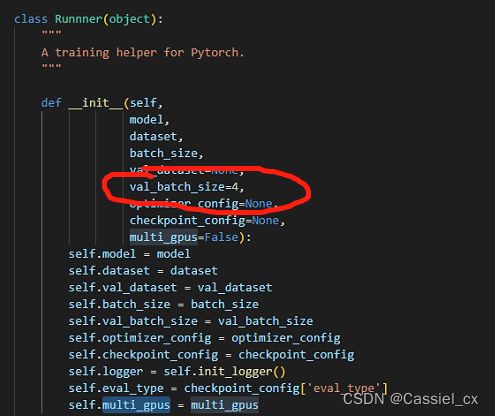活体检测 LGSC 代码环境配置及运行记录
环境配置
1、创建虚拟环境
conda create -n lgsc python=3.7
conda activate lgsc2、安装paddlepaddle
# 安装gpu版本
pip install paddlepaddle-gpu
# 安装cpu版本
pip install paddlepaddle3、安装common
pip install common4、安装dual, tight, data, prox
pip install dual tight data prox5、安装paddle
pip install paddle6、安装cudnn
conda install pytorch==1.7.1 torchvision==0.8.2 torchaudio==0.7.2 cudatoolkit=10.1 -c pytorch7、安装matplotlib,sklearn,opencv-python
pip install matplotlib sklearn opencv-python代码修改
1、根据以下代码创建保存模型的文件夹
如:'./work_dir/FAS/Best_model'
checkpoint_cfg = dict(
work_dir='./work_dir/FAS_add_val',
load_from='./work_dir/FAS/Best_model', # 这里
save_interval=10000,
eval_interval=200,
log_interval=10,
eval_type='acc'
)2、修改数据集路径
# 改成自己的数据集路径
data_root = 'D:/Projects/face_anti_spoofing/LGSC-for-FAS-master/data/'
train_dataset = FaceForensics(
img_prefix=data_root,
ann_file=data_root + 'train.txt', # txt文件需要根据自己的label文件名进行修改
mask_file=None,
img_scale=(224, 224),
img_norm_cfg=dict(mean=(100, 100, 100), std=(80, 80, 80)),
extra_aug=extra_aug,
crop_face=0.1,
)
val_dataset = FaceForensics(
img_prefix=data_root,
ann_file=data_root + 'test.txt',
img_scale=(224, 224),
img_norm_cfg=dict(mean=(100, 100, 100), std=(80, 80, 80)),
extra_aug=dict(),
test_mode=True,
crop_face=0.1,
)3、使用自己的数据集进行训练
由于 FaceForensics 数据集下载很慢,我就用了自己原有的数据去训练,我自己的数据是经裁剪后的人脸图,如果小伙伴的图片没经过裁剪就拿图片去跑个人脸检测模型,对模型输出的人脸框进行裁剪即可。
数据问题解决了,接下来就是生成对应的txt文件,下面的代码是我自己写的一个生成txt文件的脚本,大家可以参考一下,
import os,shutil
# 根据自己的数据路径进行修改
real_root_path = 'D:/Projects/FAS/datasets/real/'
real_img_list = []
for path, dir, imgs in os.walk(real_root_path):
for img in imgs:
img_path= os.path.join(path, img)
if img_path.endswith('jpg') or img_path.endswith('png'):
real_img_list.append(img_path)
fake_root_path = 'D:/Projects/FAS/datasets/fake/'
fake_img_list = []
for path, dir, imgs in os.walk(fake_root_path):
for img in imgs:
img_path= os.path.join(path, img)
if img_path.endswith('jpg') or img_path.endswith('png'):
fake_img_list.append(img_path)
train_txt = open('./data/train.txt','w')
for img in real_img_list:
label = 0
train_txt.write('{} {}\n'.format(img , label))
for img in fake_img_list:
label = 1
train_txt.write('{} {}\n'.format(img , label))
train_txt.close()4、接下来就可以训练啦
如果遇到如下错误:
Out of memory error on GPU 0. Cannot allocate 612.500000MB memory on GPU 0, 5.999695GB memory has been allocated and available memory is only 0.000000B.则需要把训练及验证时的 batch size 调小,如下图所示:


